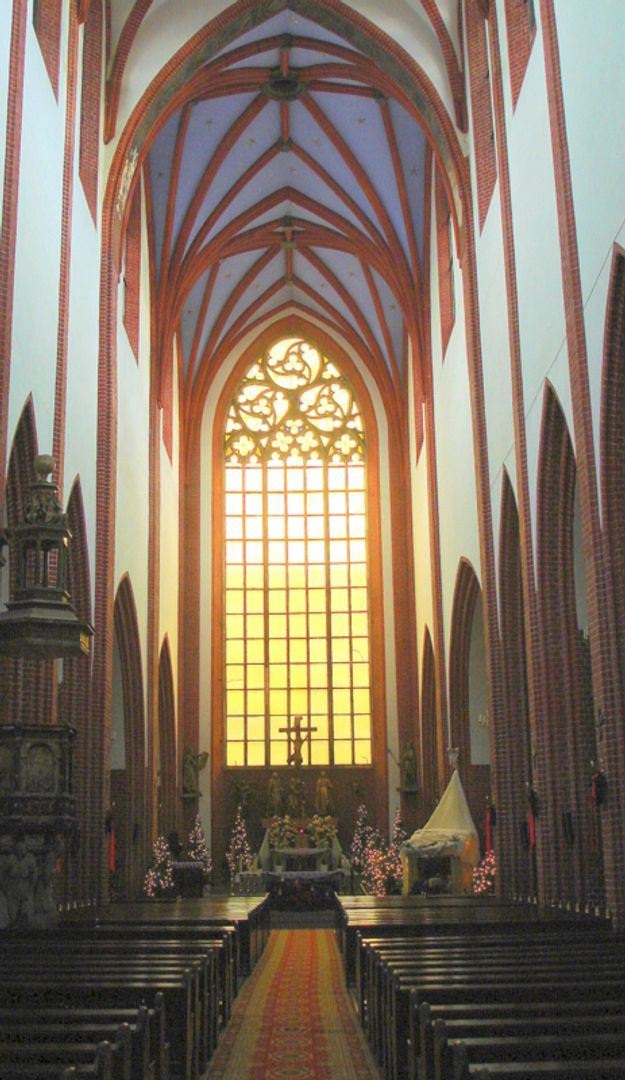St. Mary Magdalene Cathedral in Wrocław
6.05

Overview
St. Mary Magdalene Church in Wrocław, built on the foundations of earlier temples, has a rich history dating back to the end of the 11th century. After being elevated to the status of a parish church by the Bishop of Wrocław, Wawrzyniec, in 1226, a Romanesque temple was constructed for the Dominicans, which was destroyed during the Mongol invasion in 1241. The subsequent structure, built between 1242 and 1248, featured Romanesque-Gothic styling and was also destroyed. In response to a fire in 1342, construction of a new church began, which was completed in the Late Gothic style in 1362. The interior of the church is a basilica space without a transept, with a six-bay nave and a star-vaulted chancel. Architectural highlights include the higher flying buttresses and details related to Wrocław Cathedral. The towers were completed in the 15th century, and the Witches' Bridge was built in 1459. The church also acquired the valuable Sinner's Bell in 1386. Further changes occurred in the 16th century when the temple became Protestant, and new bells were added to its Renaissance spires. After the destruction of World War II, the church was rebuilt between 1960 and 1970 and handed over to the Polish Catholic Church in 1972. The interior retains a Renaissance pulpit from 1579–1581, and in recent years, the traditional colorful roof tiles have been restored. Wrocław is also home to other important cathedrals, such as the Roman Catholic Archcathedral of St. John the Baptist and the Lutheran Church of Divine Providence, making the city an important religious center for various denominations. Interestingly, St. Mary Magdalene Church was the first Protestant temple in Wrocław, starting in 1523.
Location
Tickets
Powered by GetYourGuide
2025 Wizytor | All Rights Reserved